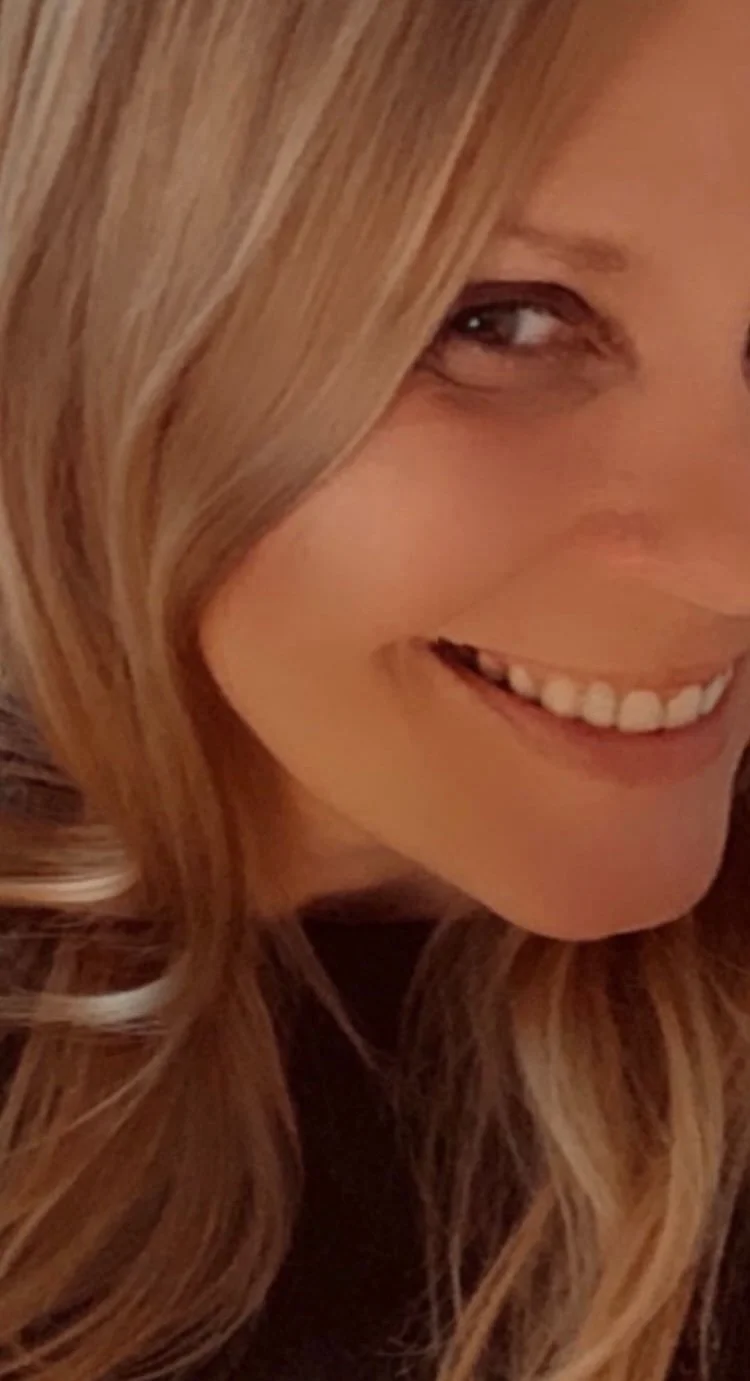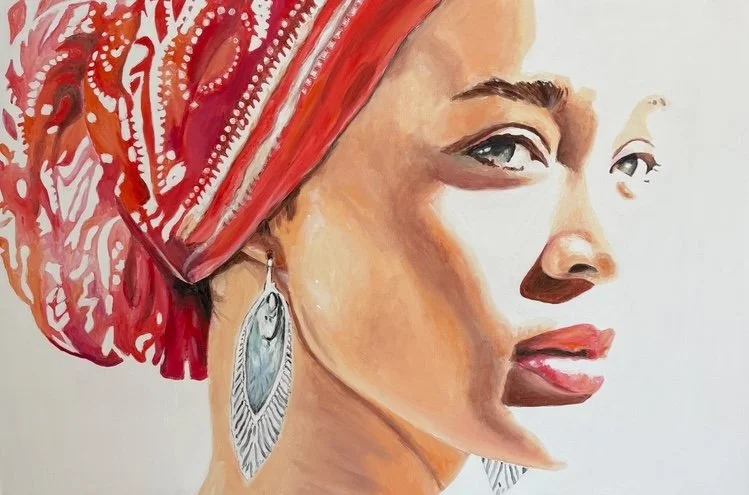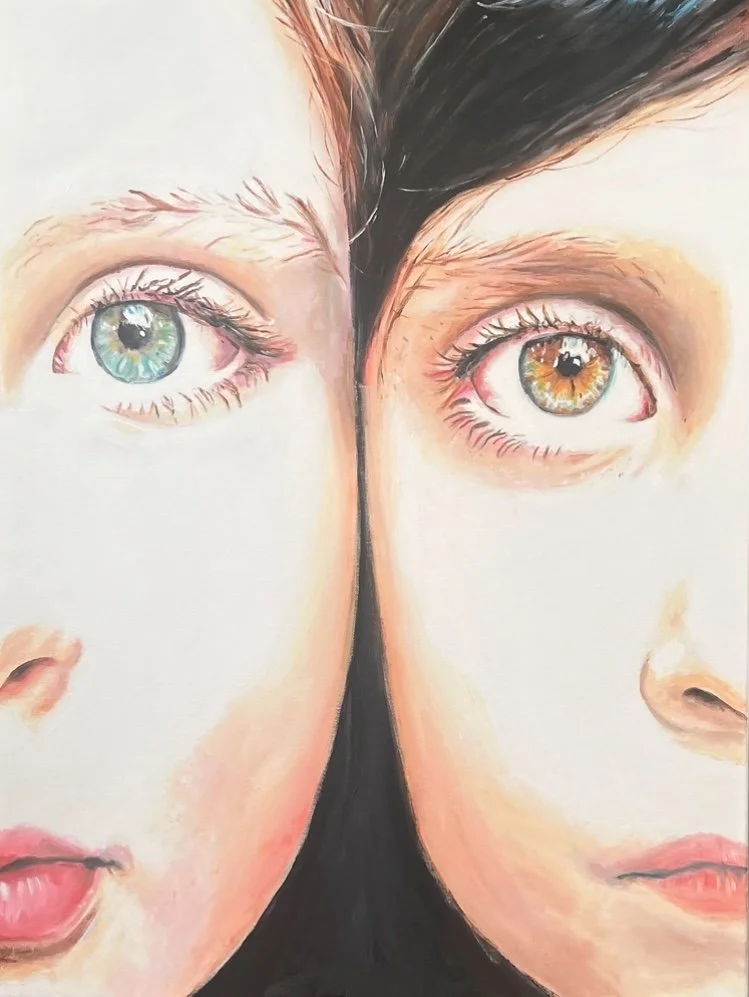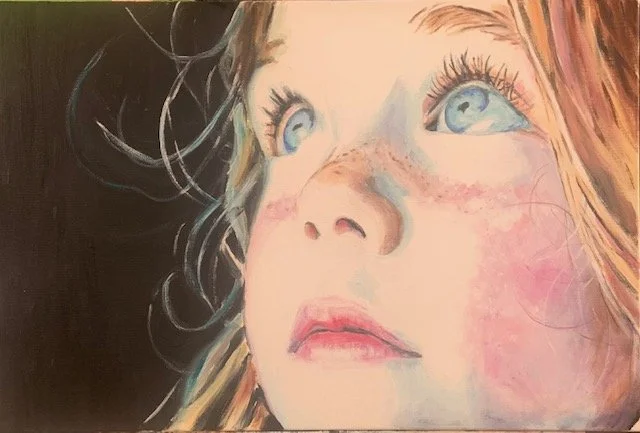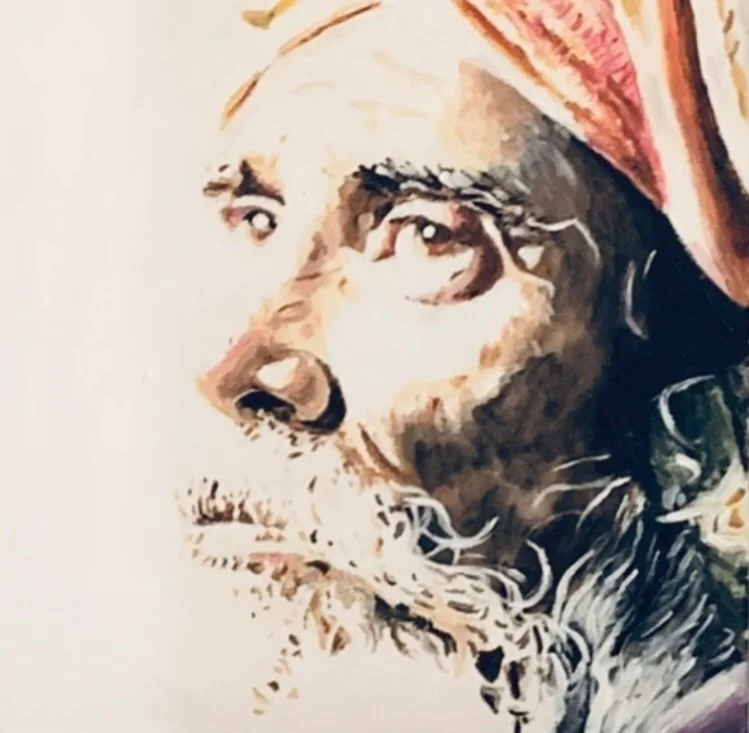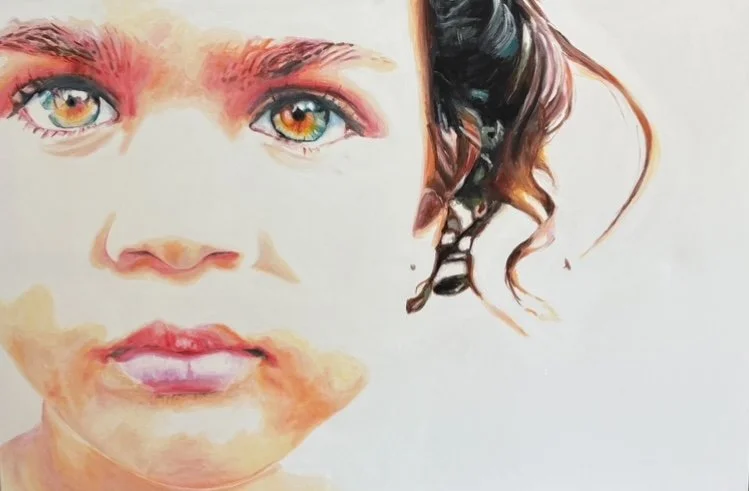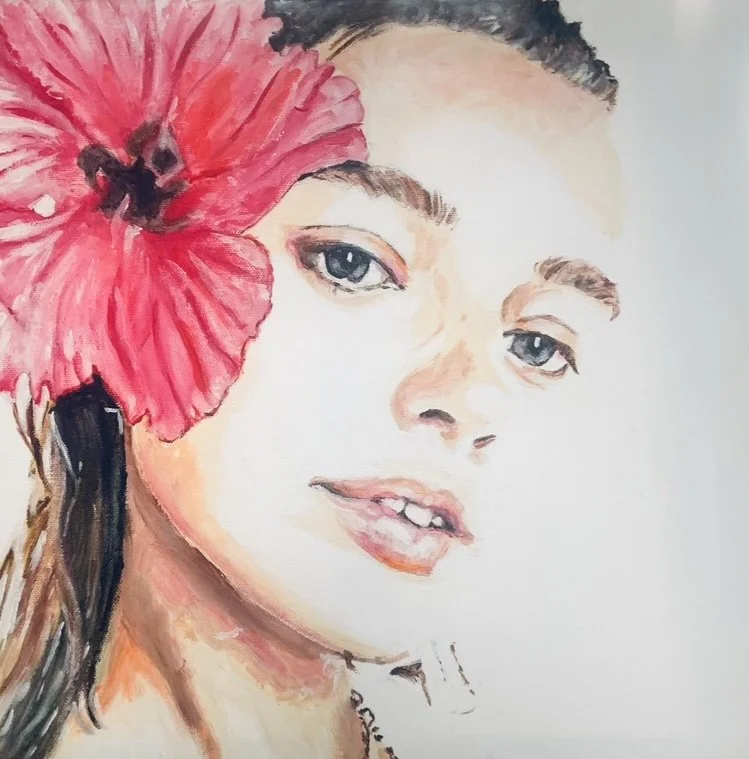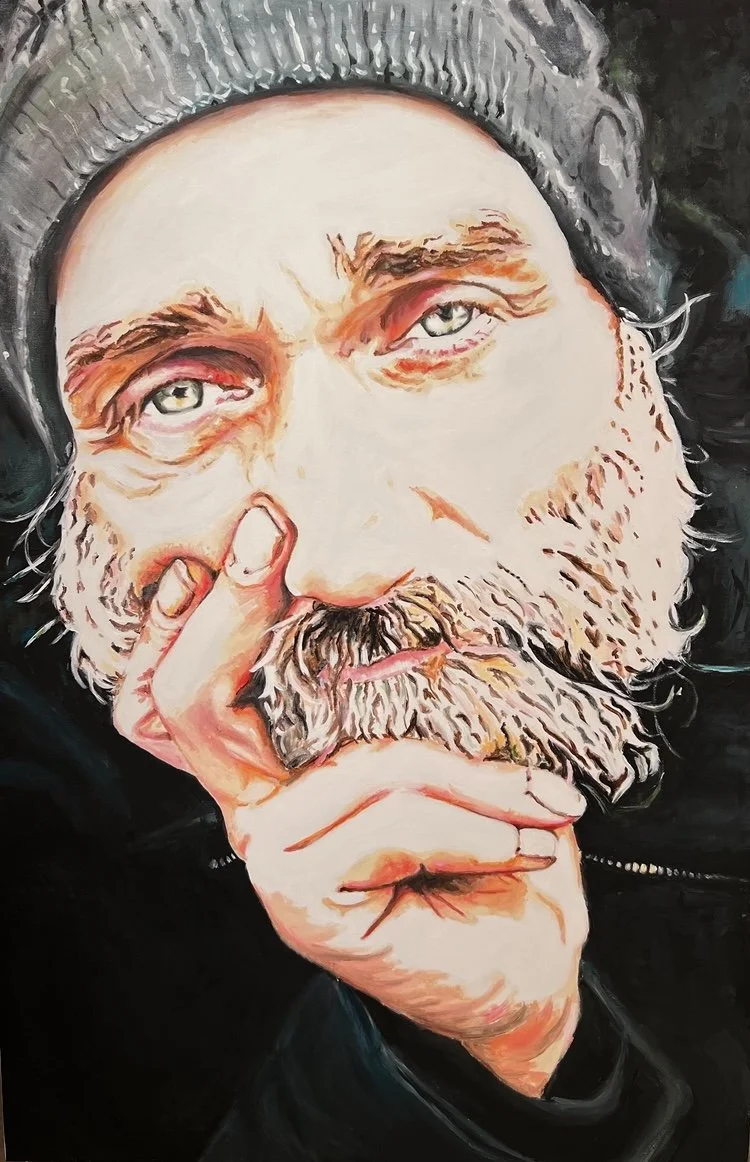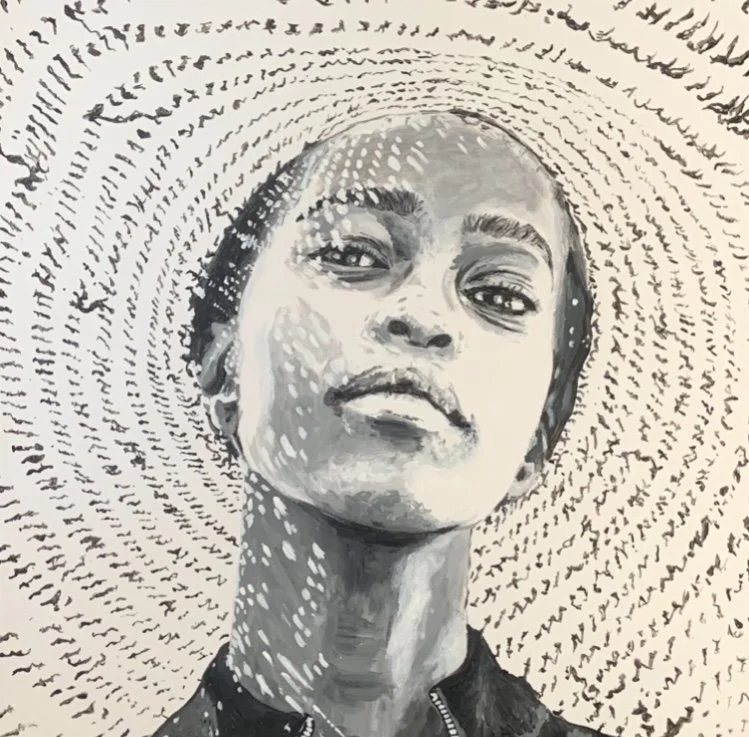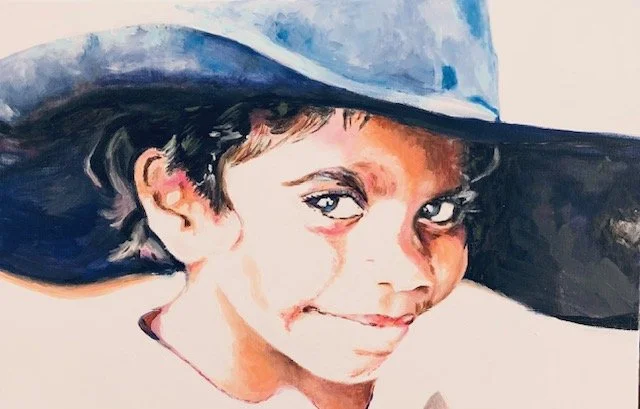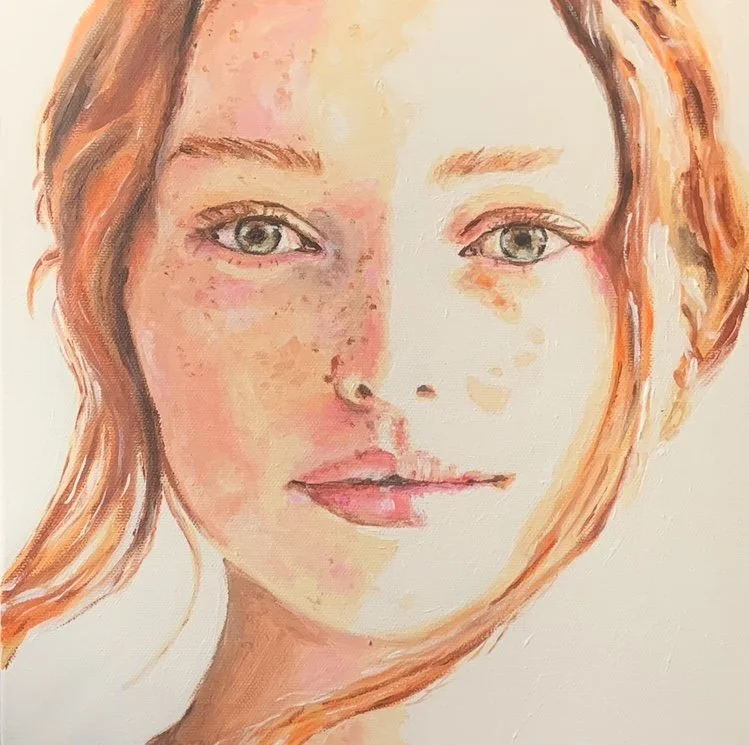Interview
Alexandra Schaffer
Alexandra Schaffer is an Austrian artist, born in 1971 in Vienna. Since 2001, she has been living and working in Rome. Although art has always been part of her life, she began dedicating herself intensively to painting only about two years ago. Her works are defined by a unique play of light and shadow, as well as deliberate white spaces that break with classical hyperrealism. In her paintings, light is not merely a tool for representation but a central means of expression. She loves to play with light and shadow and intentionally leave white areas in her works. These empty spaces are not accidents – they are an essential part of Alexandra’s visual language. Often, part of a face remains unfinished, hinted at only by a few lines and shadows. An ear, the contours of the cheeks, or even half of a face may disappear into the white space.
What is your background and how did you start your journey in the art world?
“I was born in Vienna in 1971, and my father was a well-known advertising graphic artist in Austria who still paints with great passion today. Because of this, art was something natural in my life from the very beginning. As a child, I loved drawing faces and was fascinated by capturing people’s expressions. Despite this early connection to art, I initially chose a social profession: I studied pedagogy and speech therapy and worked for many years as a special education teacher - first in Austria, then, from 2001, in Rome. For me, Rome is an inexhaustible source of artistic inspiration - a city where art is palpable everywhere. Yet, due to family and work, there was little room for my own artistic expression for a long time. About two years ago, I reduced my working hours - and suddenly the urgent need to paint appeared. What started with a few pictures quickly became a deep passion. Today, I use every free minute to paint. It feels as if I rediscovered something that was always inside me - and now finally has space to grow.”
What does your work aim to say? Does it comment on any current social or political issues?
“Although my paintings are not direct comments on current issues, I believe they are socially relevant in their own way: they remind us that we are human - with depth, feeling, and a soul. Especially in times that are often loud, fast, and overloaded, there is great power in the quiet and the reduced. The faces I paint carry a quiet intensity. Their gazes and expressions often say more than words. I am interested in the subtle nuances: vulnerability, strength, thoughtfulness, hope - feelings that connect us all, regardless of origin or life situation. For me, it’s about quietly telling inner worlds. I believe art does not have to explain itself to be effective. And sometimes, the personal holds the universal.”
Do you plan your work in advance, or is it improvisation?
“When I begin a new work, I do not seek a specific emotion deliberately - but I choose a motif that stirs something inside me. It must touch me, captivate me, and immediately establish an inner connection. That is the starting point. But during the painting process, much changes. I flow into the painting myself - my thoughts, my perception, my feelings. Every painting carries a part of me. The emotions develop while painting; they condense, shift, deepen. In the end, not only a motif appears on the canvas but my personal interpretation, my experience, my feeling. It is not about creating an exact copy but about making the essence of a person visible - in my own reduced and emotional way.”
“Although my paintings are not direct comments on current issues, I believe they are socially relevant in their own way: they remind us that we are human - with depth, feeling, and a soul.”
Are there any art world trends you are following?
“I don’t specifically follow trends, but I watch with great interest how diverse and open contemporary art has become today. What fascinates me most is the enormous diversity: there is no longer ‘one style’ or ‘one direction.’ Instead, countless individual forms of expression arise - each shaped by personal experience, inner world, and unique handwriting. I see this variety as a great enrichment. For me, art is a free space - without rules, without rigid categories. Of course, I am also interested in developments such as the interplay of art and technology, new media forms, or socially engaged art - they show how strongly art today takes a stand again. Still, I do not follow any external direction but my own inner compass. I let myself be inspired by what arises within me - intuitively, reduced, emotional. I believe the variety of voices in today’s art scene shows how important it is that every form of expression has its space.”
What process, materials and techniques do you use to create your artwork?
“I work with acrylic paints - initially for practical reasons, because I paint at home. Acrylic dries quickly, is versatile, and allows me to work intuitively in multiple layers. Over time, a unique technique developed that produces a special softness. I paint on canvas, mostly with brushes - but sometimes with my hands. A central element of my painting is reduction. I consciously leave areas unfinished, only hinting at forms instead of fully developing them. Light plays a crucial role: it is not only a means of visibility but a carrier of emotion. When a part of the face is only suggested or omitted, the light comes to the forefront - it tells the real story. This particular understanding of light grew out of practice - by repeatedly letting go of photographic precision. I never wanted to paint hyper realistically but to convey emotions. So, I began experimenting - with empty spaces, contrasts, openness. This gave rise to those bright zones that today are a key expressive device in my work.”
What does your art mean to you?
“Art means much more to me than a creative activity - it is an inner necessity. It is my space to breathe, my retreat, the place where I am fully with myself. Through art, I can process what I have experienced, what I feel, and what I perceive in others. It is my way of connecting with the world - and understanding it better at the same time. Art allows me to make the invisible visible, to turn silence into a voice. My paintings are not just about depicting faces but about capturing moments of intimacy and stillness - those quiet in-between spaces that often tell more than words. I firmly believe that art has a special power to connect people. It can touch us in moments of fragility or beauty and remind us of what connects us as humans. I try in my works to create a connection - between the inner world of the depicted figures and the feelings of the viewers. For me, art is a journey without a fixed destination. It changes with me, with my gaze, my technique, and my experiences. But one thing remains: Every painting contains a part of me. It is never just a face on a canvas - but a lived feeling, a fragment of my soul. And if someone stops in front of one of my works and feels touched, then art has fulfilled its greatest purpose for me: creating a quiet, deep connection - beyond words.”
What’s your favourite artwork and why?
“I have many paintings that are important to me, but my work titled ‘Call me Ishmael’ is one of my favorites. It is a large-format piece, and its size alone gives it a strong presence. What fascinates me most, however, are the eyes of this man - they hold a deep calmness and at the same time a story that is hard to grasp fully. His gaze is open, vulnerable, honest. There is something in this face that goes far beyond what is visible. It speaks of experience, of life, of quiet dignity. I tried not just to create a likeness, but to make an inner world visible - and in this painting, I came especially close to that. If I had to choose, it would be because this portrait embodies everything my painting means to me: reduction, light, emotion, depth.”
Have you had any noteworthy exhibitions you'd like to share?
“In recent years, I have had the opportunity to participate in several exhibitions that have been very special to me - each in its own way: ‘Sapienza’ at HUB – University La Sapienza in Rome (April 2024). This was my first exhibition, organized in cooperation with the University La Sapienza. Solo exhibition in Rome (September 2024) with support from the Austrian Cultural Institute This exhibition was a major milestone for me. It was the first time I could show my works on a larger scale - in a beautiful space, with many encounters and moving feedback. ‘Libertas’ at Museo de’ Medici in Florence (January 2025). Being part of this group exhibition in a historic museum was a very special experience. The theme of ‘freedom’ was central - and I was able to contribute a very personal portrait. Auction at Colasanti Auction House, Rome (March 2025) - Several works took part in the auction at the renowned Colasanti Auction House in Rome. A thrilling opportunity to present my art in an international auction setting. ‘Maestri a Dubai’ (April 2025) - Curated by Sandro Serradifalco, this international exhibition was an exciting opportunity to present my work to a new, international audience. Here, I also received my first art critique from the critic Sandro Serradifalco. The diversity of styles represented was very inspiring. ‘Uniti per Dare una Mano – Una Tela per la Pace’ – Galleria Borgo Pio, Rome (March 2025) Participation in an exhibition at Galleria Borgo Pio in central Rome, where artworks were auctioned in support of peace. This was an important opportunity for me to use my art to support a social cause. ‘Settimana Ellenica’ – Greek Week in Rome (May 2025) Another group exhibition focused on cultural exchange and artistic diversity. Here, too, it was about closeness between people, cultures, and forms of expression - topics very important in my art. I am represented with several paintings at the Settimana Ellenica.”
Instagram: @alexandrart23_

